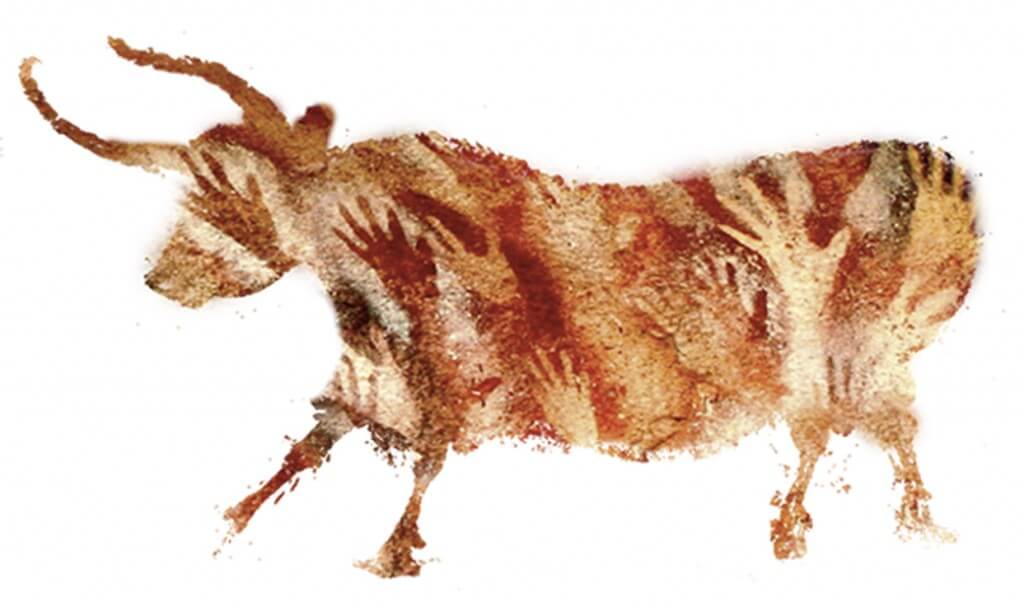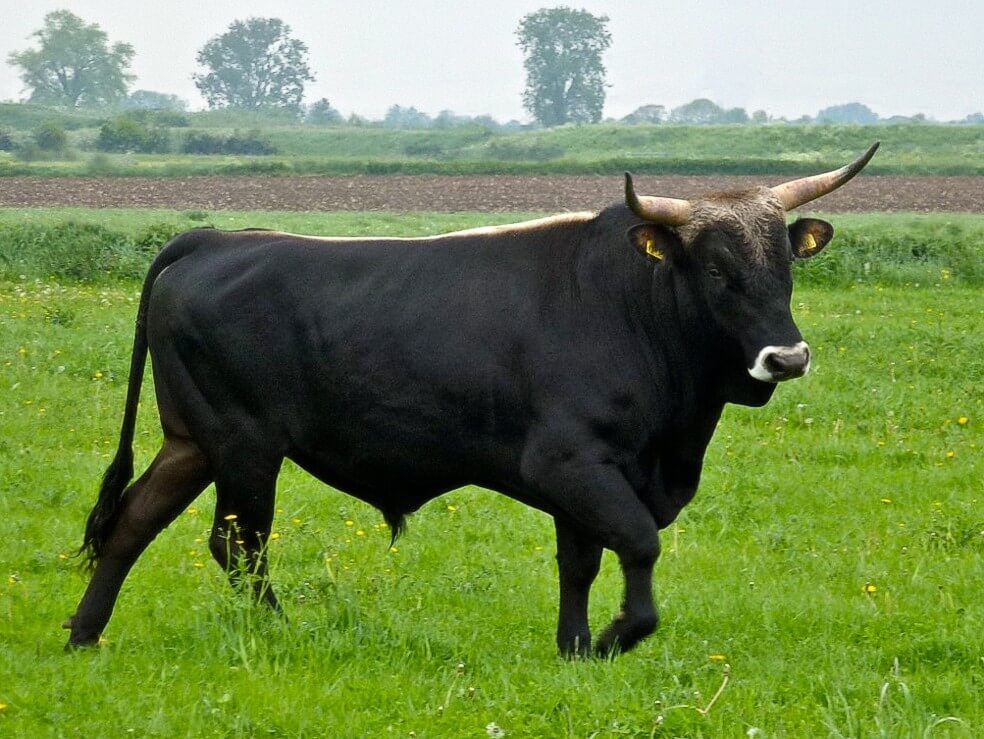The main icon for WILD10 is the auroch, the large, wild bovine herbivore that roamed Europe for many thousands of years, shaping the landscape, until it was extirpated almost 400 years ago. The artistic impression we use (created by Jaime Rojo) is from one of the many cave paintings found in Spain and France, superimposed with the human hand. We chose this symbol because just as the wildness returning in Europe is the main reason for WILD10 to convene there, modern human interaction with breeding of primitive cattle also hopes to bring back the auroch…the process of which we believe is a symbol of man and nature working together in a new way, to re-wild, to protect intact European wilderness, and to help create a new conservation vision where humankind and wildness can coexist in a modern world….in short, to Make the World a Wilder Place!
Article from European Wildlife:
For hundreds of thousands of years the Auroch was a part of European nature. Since the death of the last aurochs in 1627 in the Jaktorow game preserve in Poland, it seemed that Europe has lost this key species forever. The history is about to change, though. The European Wildlife organization in cooperation with the Dutch Taurus Foundation is preparing a project aiming to return the Aurochs to the mountains of Central Europe.
The project is part of a program of the European Centre of Biodiversity whose aim is to protect endangered species and to reintroduce the ones that have become extinct in many places – European bisons, wild cats or wild bees. And the aurochs, of course.
At present, the Dutch Taurus Foundation is preparing two herds that will form the base for semi-wild breeding herds of aurochs in the mountains of the Czech Republic. The aurochs are brought back by cross-breeding the most suitable primitive breeds of cattle from the whole of Europe within the Tauros Programme.
Once the aurochs roamed over vast areas of Europe, Northern Africa and Asia. It was an impressive animal, perfectly adapted to the diversity of landscapes it inhabited. The Aurochs ranged from open savannah-like landscapes to marshes, forests and lower mountains and was able to fill in most ecological niches encountered in Europe.
Grown up Aurochs could hold their ground against big predators such as wolves. The long and thick horns acted as a powerful defense against any outside threat. The animal was up to two meters high and due to its long legs and slender build it was an agile animal.
The body shape of the auroch was, like in other wild bovines, athletic and, especially in bulls, showed a strongly expressed neck- and shoulder musculature. Even in carrying cows, the udder was small and hardly visible from the side; this feature is similar to that of other wild bovines.



an idea far from reasonable when we are facing tremendous shortcomings while protecting the species and wilderness habitats facing their extinction today. talking about european mink, seals in baltic sea and saimaa region, iberian lynx etc. instead of dealing with reintroduction of “copies” we should put more true effort on saving and protecting what is still there. truly guys – get real and come to your senses! there is much more than can be done with the time, energy and money you have planned in this project described here!
Hi Rait,
Yes, there is a lot to do for wildlife and wilderness. The “back-breeding” of the auroch is not WILD’s project, we just shared it as one of many initiatives along a very wide spectrum of work and attention going into the necessary task of making the world a wilder place. The World Wilderness Congress is a platform to present, debate, inspire, and act on many different fronts…not all of which are universally agreed upon, of course. We exist in a diverse world. Thanks again for your input.
That bull in the photo is one of the most beautiful animals I have ever seen in my life. To see a herd of Aurochs in the wild would be very satisfying to me. I hope they can return this wild creature in its original size. Most impressive.
There are many paths to form and function. For re-creating of the Aurochs, to also produce a tool for ecology and forest fire reduction, it is possible by combining only two bovine breeds to create the form and function. Like Heck cattle the Scottish Highland cow is key, simply combine one part Highland with one part Bazadaise. See Diarmid Cattle, Blue Ox Farms. Kelliher, Mn USA.
Look for wild cows in Danube Delta. there are a lot of cows that you can use for this project very primitive breed. The aspect and color is very similar to aurochs.
Excellent initiative, I hope to see one day one herd of Auroch grasing free in the wild somewhere in Europe and particularly in my home country France.
The Aurochs’ genes are present in all cows and cross breeding allow to recover the Auroch original form. Some scientists will say that cross breeding will not allow to get the original one. They just forget that what and where were the original ones? Each auroch had its own genes and there have never been any original but as much originals as you had individuals and sub species. A cross breeded population coming from the auroch full genes pool will be much more viable and healthy than a rescued population coming from few rescued animals (like for wisent).
What is important is to get the same phenotype and the same behaviour because all the auroch genes are still alive in bovine breeds.
I think it’s the wrong outlook to say which endangered animal we should pull resources for: surely restoring one endangered, or in this case extripated, animal will fill some role in it’s ecology that was in decline without it. No doubt in the long run the mock-Auroch would provide a useful function as a hard-earned meal for predators, and an important meadow pruner and fertilizer.
it’s like people complaining about efforts China puts into Panda conservation: surely wild pandas would keep vital bamboo thickets pruned, spread and fertilized, which many other equally worthy vulnerable species benefit from… not least the bamboo. AND if you protect a habitat for a more iconic animal, you’ll be potentially protecting whatever it eats or whatever eats it, ect. ect.